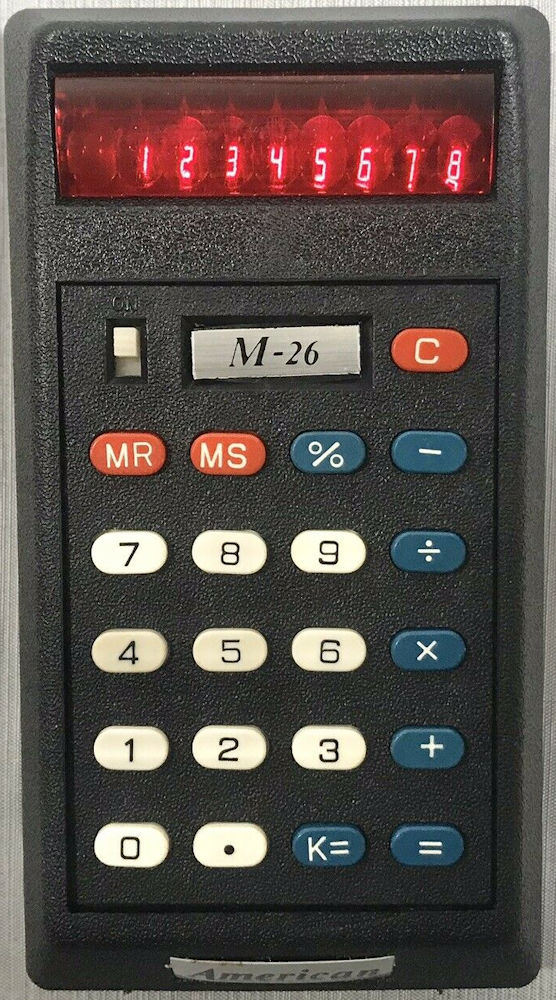AMERICAN: M26 (version-1) |
|||

| DUDEK Emil: Case: Constructed from two-piece black matt plastic the case is compact but quite fat. The red display filter is tilted and convex to give additional magnification of the bright but limited viewing angle display. The inset keyboard surround black printed metallic sticker (with model number) that sits in its own recess and the lower edge has another sticker (with brand name) in a similar recess. The tiny keys are short travel and bouncy and reminiscent of miniature Commodore keys. Compact calculator made very cheaply which resembles the Summit SM-20. The logic is pretty poor with no recovery, disappearing negative sign, negative zero and divide to negative zero bugs, basic percentage function and quirky constant function. My example does not have reset on power-up either. A must for anyone's collection - just to see how bad a calculator can be. Boards: The keyboard assembly sits on top of the main board and the whole assembly sits lose in the case. The two are joined together by soldered 7-way block connectors. You cannot therefore access the top of the main board. Construction: Access the calculator is removing the single screw at the back and the two others in the battery compartment. The case separates easily. Logic comments: [C] clears the last number entered whilst a second press clears the whole calculator. Input overflow is suppressed, inputting a ninth digit is ignored. Negative numbers are shown with a minus in the immediate left hand digit, but has no ninth digit to travel into so you can use eight digit negative numbers but you do not see the negative sign. The constant function on my example baffles me - coming up numbers that look like you store the operator in the constant memory, bit cannot seem to reset the base number. Divide by zero shows ‘00000000’ and is not recoverable. Overflow shows the result only and is not recoverable. The percentage key just divides by ten, repeatedly. If you use it on a negative number it will turn positive. It suffers the negative zero bug; [1][-][2][=] gives ‘-1’ now key in [+][1][=] will give ‘-0’ It suffers the divide to negative zero bug: [0][-][1][=][/]10000000[/](10[=] will give ‘-0’ Use [MS] to store a number in memory and [MR] to recall, but there is no indication of memory store, you have to remember it. |